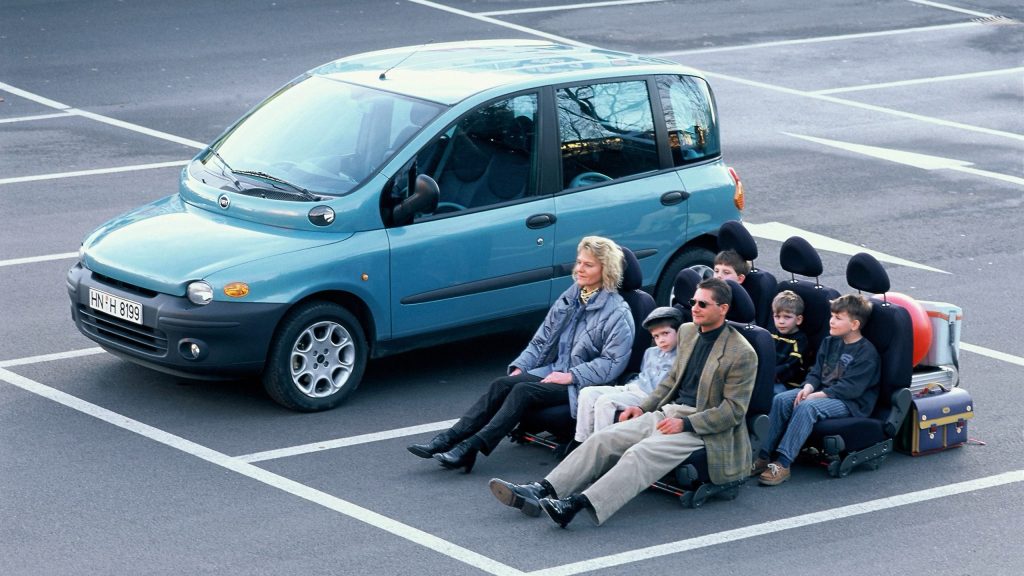
Words: Craig Cheetham
Photography: Craig Cheetham/Fiat
While its looks were subjective, its brilliance was never in doubt. It’s the Multipla’s a definitive 90s classic.
Fiat is one of those car companies that goes through peaks and troughs – one minute, it’s creating incredible cars that capture the zeitgeist of an era, and the next it goes through a period of automotive beigeness, with models that it tries to shoehorm into markets where nobody wants a Fiat, rather than sticking to the characterful cars it does best.
Back In the mid-nineties, it was on the crest of a wave. Spurred on by the world-beating Punto – winner of the 1995 European Car of the Year Award – and with build quality at an all-time high for the brand, the company was being taken seriously for once.
Part of that was down to it leaving its Eighties angularity behind. Led by charming and charismatic senior designer Roberto Giolito, the square edges that defined the Panda, Uno and Regata were replaced with a more curvaceous approach embracing the aerodynamics of the era; first the Punto, then the mid-sized Bravo and Brava ‘Type 182’ models in 1995, which once again romped home with the European Car of the Year lollipops proudly displayed in their rear windows.
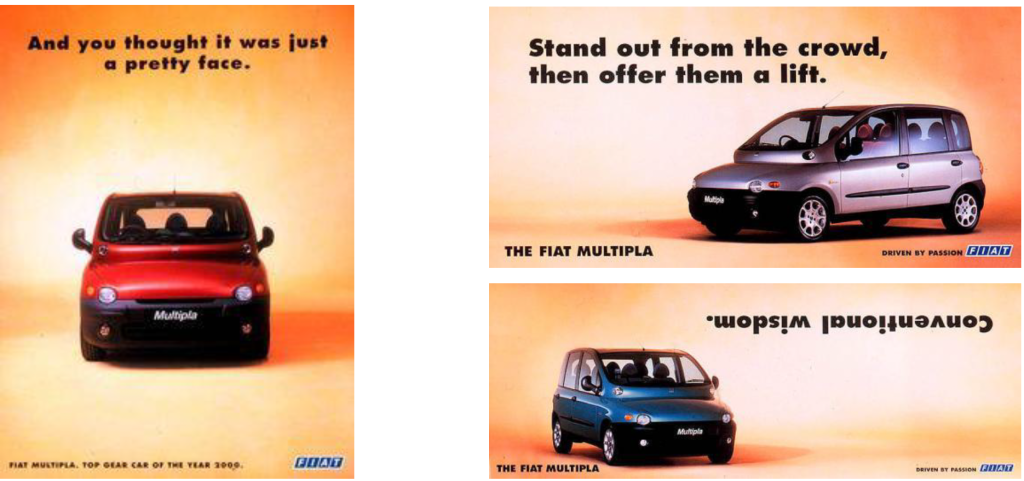
Next up was the Type 184 in 1996 – a 182 with a boot or an estate car rear end that we knew as the Marea – but it wasn’t until 1998 that the final member of fine-handling front-wheel-drive Fiats reared its debatably ugly head.
Making its debut at the 1998 Turin Show, the Multipla sent shockwaves through the industry. Fiat’s decision to launch a car that looked so incredibly different was a bold one, and for every person who declared the Multipla to be hideous, there was another who adored it. More than a quarter of a century has passed since, and there has yet to be another car quite like it – nor is there ever likely to be one.
Dolphin-nosed weirdness aside, there’s something truly brilliant about a Multipla. It is, in effect, a car that completely put function before form – its divergent looks being the very definition of design being led by purpose.
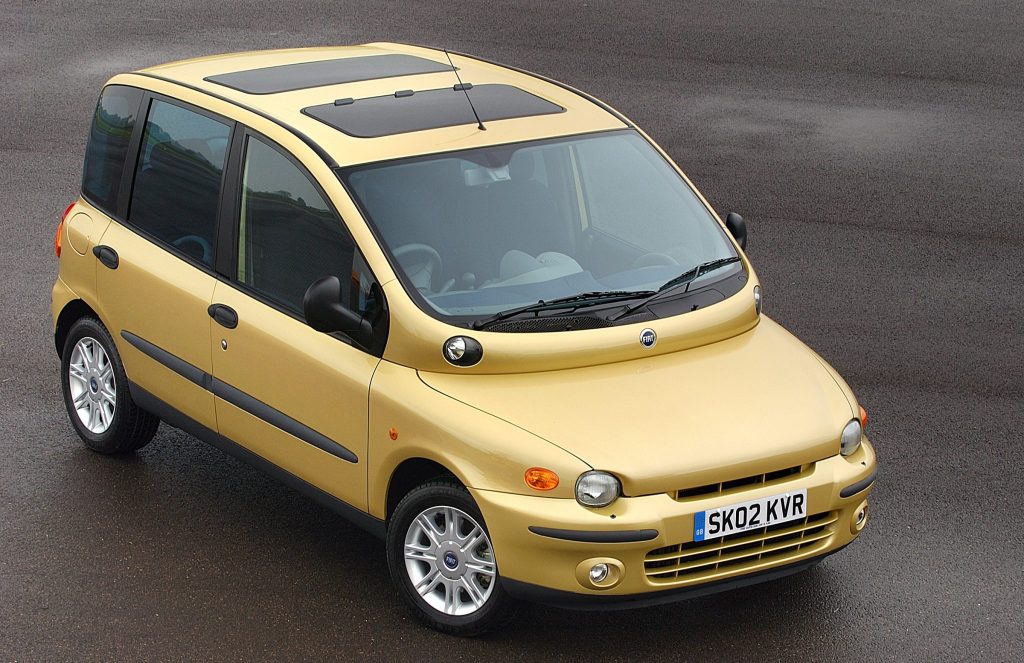
But who better to define that than Mr. Multipla himself, Roberto Giolito?
“We’d seen this move towards ‘one figure’ shapes since the Renault Espace came along in 1984,” he said. “But while the concept of a single shape gave a lot of space inside the car and meant flexibility for interior designers, for those working on the exterior it limited the options.
“We already had a family car. A joint venture with PSA saw the Fiat Ulysse and Lancia Zeta built alongside the Peugeot 806 and Citroen Evasion [Synergie in the UK], but those cars were all the same. The design was fixed in all but detail. It was frustrating as I wanted to be cleverer.
“Our contract meant we couldn’t build a direct competitor, but Renault did us a favour by launching the Scenic, which was an Espace in a smaller format. A C-segment MPV would not be seen as a competitor by PSA, so we could create our own rival for the Renault.”
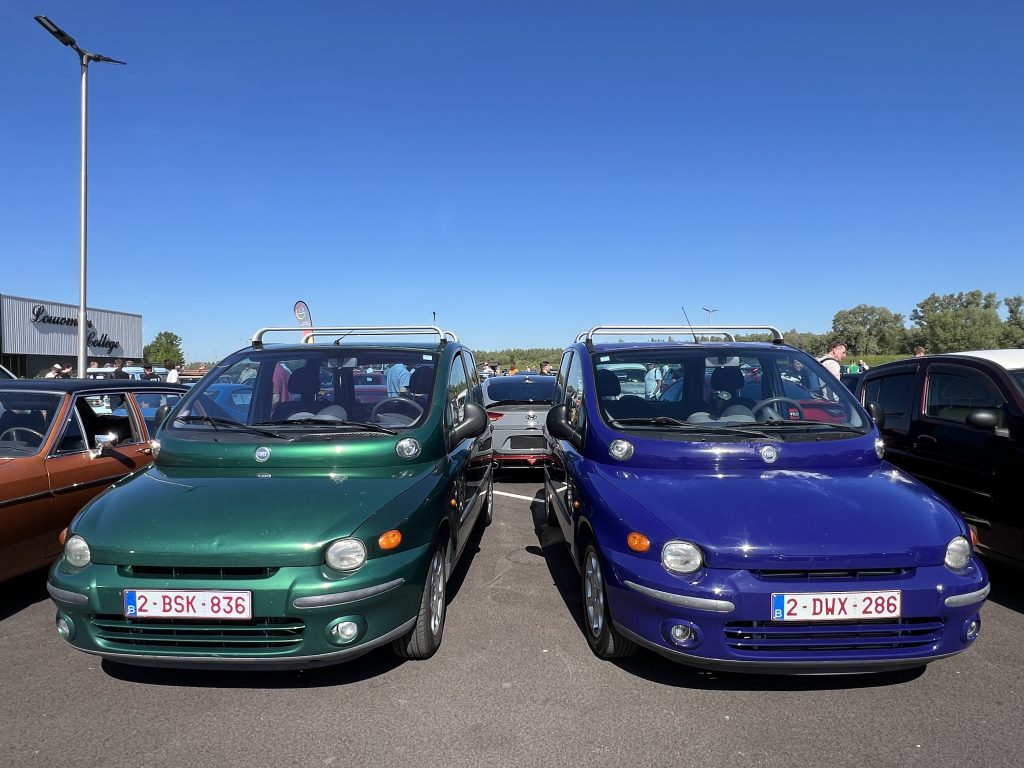
The Type 186 project was pushed through, to create an MPV off the Type 182/184 platform. Initial studies used the Marea Weekend as the base and a sixth seat would be its USP, so initial studies were around a 2+2+2 layout.
“We couldn’t make it work,” said Giolito. “It wasn’t that the platform didn’t allow it, but three rows of seating meant a plain one-box body and no luggage space, and that was what we wanted to get away from, so we went to look at things differently. We couldn’t make the platform longer, but we could make it wider.”
In the end, the Multipla shared its wheelbase with the Brava – using the same floorpan and subframe but with a wider track, allowing six seats in two rows of three. The secret lay in its double-decker layout, which allowed most of the car to sit beneath the cabin floor rather than intrude into it. Mercedes-Benz laid claim to the ‘sandwich floor’ concept with the launch of the A-Class in 1998, but in reality, the Multipla was first to the party by a couple of months.
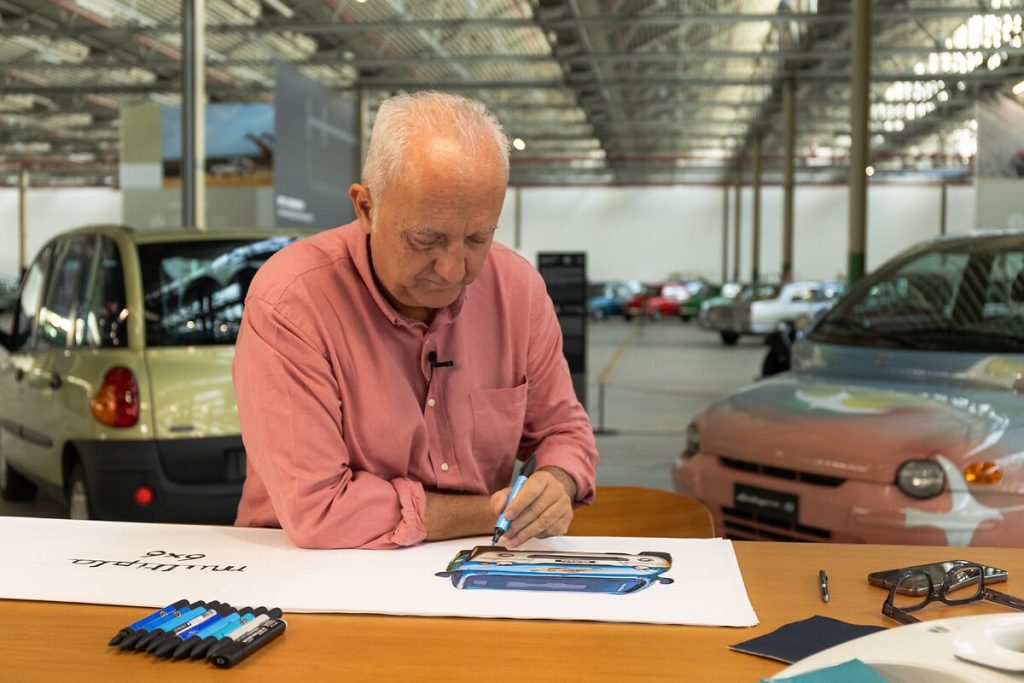
But for Giolito, giving the Multipla a distinctive appearance was as important as its functionality.
“The best designs are the ones that are truest to a vehicle’s purpose,” he said. “Take the Land Rover [Defender] – it doesn’t do anything it doesn’t need to and is perfect as a result. An old 2CV is the same. It’s less obvious but the Multipla is the same. No element of the design wasn’t thought about among our team – we thought of everything.”
Some of the details are more obvious than others, though. The angled instruments, for example, are based on the screen of an iMac computer, while the slanted air vents behind were inspired by the air vents in the design team’s office.
The exterior, meanwhile, highlights all of those outer details – the double-decker body, the high roofline, the barrel sides and the low bonnet, which allows better illumination from the lamps. Weird as it looks, it’s all there for a reason.
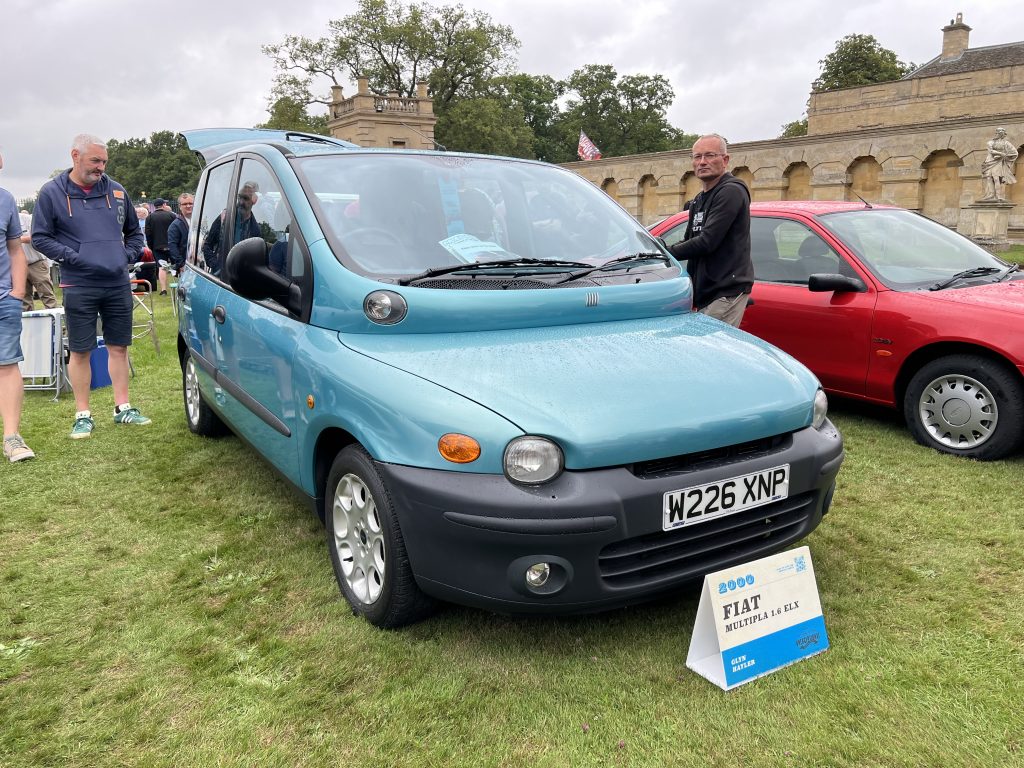
Today, it has a cult following. At the 2025 EMWalhalla show in the Netherlands, there were five on display, all owned by young enthusiasts, while at Hagerty’s own Festival of the Unexceptional, there were three, all seemingly well-loved.
That’s the kind of car it is, though. You can look at the Multipla, wretch and run away to hide behind a tree, or you can take time to appreciate the brilliance of it – at which point, you realise its beauty is way more than skin deep.
What are your thoughts on the Fiat Multipla? Cult classic or design disaster? Let us know at hdc@hagerty.co.uk